Chiang Rai to Pai
We left Chiang Rai and our destination for today was the small northern Thailand town of Pai.
Pai sits near the Myanmar border (146km northwest of Chiang Mai). With a local population of only just over 2,000 residents, it is well known among backpackers for its relaxed atmosphere. This was something that we were looking forward to.
Because of it’s close proximity to Myanmar, their culture is heavily influenced by the Burmese. The town is full of cheap guesthouses, souvenir shops and restaurants. It was clear that the town primarily thrives on tourism.
As Pai lies at the foot of the mountains, many tourists use it as a base for trekking and visiting hill tribes.
The Road to Pai
The trip from Chiang Rai to Pai took us 5.5hours. We didn’t want to backtrack all the way to Chiang Mai so took the alternative route which was slightly longer but we had different scenery to look at.
Although not far in kilometres, the road in and out of this sleepy town is not for the faint-hearted.
Many backpackers travel from Chiang Mai to Pai, purely for the adrenalin rush of riding a motorbike or scooter along this stretch of road. For many of them, this will be their first experience of riding such modes of transport and we saw many breath-holding situations as they took on this mountainous, winding road.
762 Curves
The road consists of 762 winding, hairpin, narrow turns through the mountains (you can even buy tee-shirts with 762 curves in Pai).
The roads had various depths of pot-holes and there were numerous oil slicks left from trucks on some of the ‘turn yourself inside out’ corners.
Our poor Vios rental car struggled up some of the hills and passes as we chugged our way through the mountainous but spectacular terrain.
Accident Prone
Accidents along this road are a common occurrence. We had to tail a couple of ambulances to and from the town, and we were going faster than they were as they had to transport the road’s latest victims. I pity the patients in the back having to endure those curves and twists all the way to Chiang Mai!
There is a regular passenger service which runs from Chiang Mai and we constantly passed numerous mini-vans making the daily commute. Be warned that if you chose this mode of transport in and out of Pai, that due to the winding nature of the road, motion sickness is common, and the drivers will not stop if you feel the need to vomit.
Pai World War II Memorial Bridge
On the road in from Chiang Mai, is the Pai World War II Memorial Bridge.
This antiquated-looking bridge is good for a quick stop for the odd selfie. Although it is a historic venue, it is not the original bridge. This steel bridge replaced the wooden structure which was built using forced local labour by the Japanese soldiers in 1941. They used elephants to drag the logs down from the forested hillsides.
The departing Japanese soldiers left towards the end of the war, burning the bridge down. As this bridge was important to the villages in their everyday life, they all came together and rebuilt the bridge.
This bridge was washed away in a huge flood in 1973 so once again the bridge was rebuilt. This is how it stands today. Built of steel this time and built to withstand floods and fire but not vehicular traffic.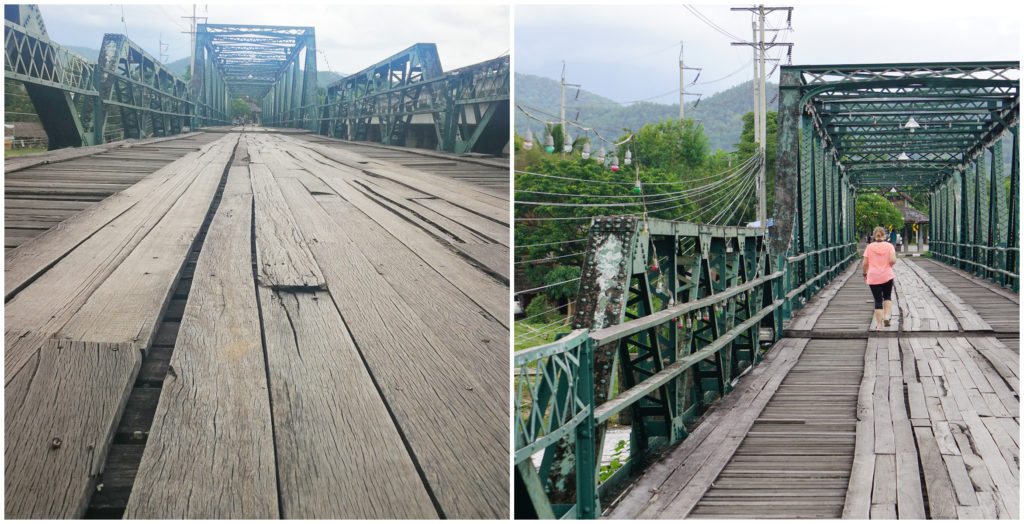
Accommodation in Pai
Although we hadn’t made any reservations for our accommodation, we had a list of our top picks. The big bonus of having your own transport is that we could do drive-bys to suss out some of our options. Pai is not a cheap destination being so touristy. Some places on our list were too far out of town and we didn’t want to have to drive anywhere in the evening. Of course, these were the cheaper options so we pulled into a couple of other random places we drove past to get an idea of prices.
Yotaka@Pai
We loved the location of a place called Yotaka@Pai. I went into reception to negotiate a price with the two girls behind the counter. They were more interested in their phones than trying to sort a room and rate for me. Eventually, they told me that it was 850THB/$38NZ per night without breakfast. When I returned to the car, we quickly looked on agoda.com and we made a booking online for 648THB/$29NZ. It’s not a lot of difference but it irked me that they quoted me the more expensive price for a walk-in, hoping to score some extra money. They were by no means full so they could have easily lost a booking because of this. This is the difference between staying in a place that is run by staff and not family operated.
They had well appointed individual chalet’s and ours was located down the back of the property. The property was beautifully landscaped with a real tropical theme. We were pleased to be towards the rear of the complex as we could hear at least two live bands playing during the evening and so it would have been quite noisy if we were any closer to the street. It wasn’t loud enough for us to use our earplugs so not that intrusive.
Our chalet was relatively new with a modern bathroom, large TV, AC and WiFi. Not having breakfast was not an issue as we found a great little family food stall right across the road and enjoyed pork noodle soup for 35THB/$1.50NZ.
Location, Location, Location
The best thing about our lodgings was its location. We were right in the middle of all the eateries, shops and bars. In the evening, they shut the streets off to all traffic and we could wander the streets which are lined with food stalls, catering for all nationalities and tastes.
Pai certainly has a laid-back vibe and is dominated by the backpacker/hippie scene. Yes, we did feel like we were the oldest ones there. There are a lot of ex-pats that have made Pai their home. It was quite interesting that there was quite a large police presence in the town and enforce a strict ‘no drinking before 5 pm rule’. From our observations, it appeared that the main culprit might well be other substances other than alcohol that contributes towards illegal activity in the village. This could be the reason why the village has such a relaxed atmosphere with a lot of people walking around with glazed stares.
Attractions around Pai
Chedi Phra That Mae Yen (Big White Buddha)
The next morning we made for the big white Buddha on the hill (Chedi Phra That Mae Yen). This impressive Buddha has an imposing presence which can be seen from the village. It is about a 2km drive and thankfully we could drive most of way up the hill. We didn’t get away without getting a workout, however. There were still 353 steps to climb to the top.
We were the only ones there so we could wander around the base of the Buddha and take in the panoramic views across Pai and beyond. We could see the Hill Tribe villages in the distant hills and it gave us a good perspective of the surrounding landscape.
The Grand Canyon of Pai
Driving for a further 8km out of town, we arrived at Pai Canyon. The best way to describe it is narrow red ridges with a steep-sided valley.
It is quite a unique geographical area which was formed by continuous erosion over decades until it reached its current condition.
The carved narrow ledges and slabs have steep cliff drops and a series of narrow walkways cut out along the ridges of giant rock walls.
I had rolled my ankle a week before so was still supported by a bandage so I was a little unsteady on my feet. This combined with my annoying fear of heights cemented my decision not to walk the narrow gauntlet which had steep drop-offs on either side of the narrow path.
As Scotty carried on, I still managed to see some stunning scenery as I made my way to where he was going to pop out on the other side of some deep cavernous ravines. The landscape took on an almost Mars-like appearance with its red soil and baren gutted cliff faces.
I would have been more reluctant to walk too far had it been raining with damp conditions. It would be like walking on slippery ice as the clay was solidly packed underfoot. There was a good grip in the dry so we could enjoy the 360-degree panoramic views.
Land Split
We had read some good reviews about Land Split. Many had said that the local family who owns and run the attraction are the real highlight.
Always keen to meet and chat with the locals we backtracked to Land Split to see what it was all about.
This farming family were awoken one morning after a sizable earthquake in 2008. Their farm had been cut in half by a deep crack. It had split all their crops and ruined their means to farm and harvest them.
The family has turned this geological event into a tourist destination. You arrive at the farm after following some rudimentary signage and instantly greeted by smiles from the owner’s wife. There is a stall set up at the entrance. She gestured for us to wander up the hill first to view the split before returning for refreshments.
The split itself was fairly unremarkable. We could imagine what they must have found that morning back in 2008. They went to bed at night with a perfectly intact farm. To be greeted in the morning with this gaping cavern.
The Friendliest Hosts
We were treated to fruits, peanuts, banana chips, sweet potatoes, roselle juice and wine (like a small hibiscus). There was no charge but they simply ask for a donation of your choice.
All in all, I think that it showed great entrepreneurship. This family has turned a disaster into a rather thriving tourist venture. They are reinvesting their income back into the property with newly built public toilets and formed pathways to and from the split.
The reviews were spot on when they said the main attraction is the lovely owners. There was a German tourist there at the same time. He and I had a guided tour of their garden where they grow many herbs, spices and plant life. She was so passionate about her plants and she spoke at great length on what each herb was used for giving us taste tests along the way. Many of them I recognised but there were some I’d never heard of.
Heading back to Chiang Mai
Our house sitting assignment was starting soon. We needed to head back to Chiang Mai which was a 122km drive which would take us around 3 hours.
We were so pleased to have had the opportunity to tick off a large part of Northern Thailand. It is an area we had been wanting to explore for some time.
There are a lot more places to see in the area. Our short excursion northwards certainly gave us a good overview. It is quite different to places in the south with its own customs and heritage.
Check out our blog and video of our stay in Chiang Rai.
Click on the link below for a video of some of the highlights of our Pai excursion.
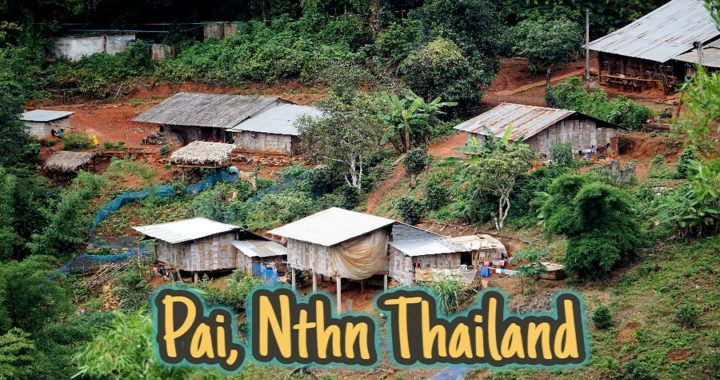
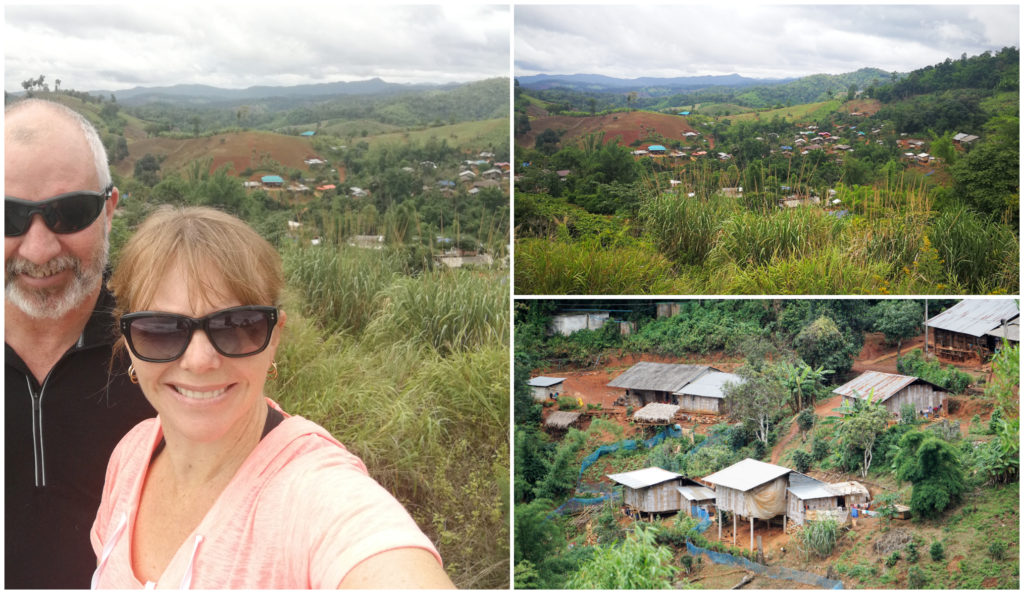
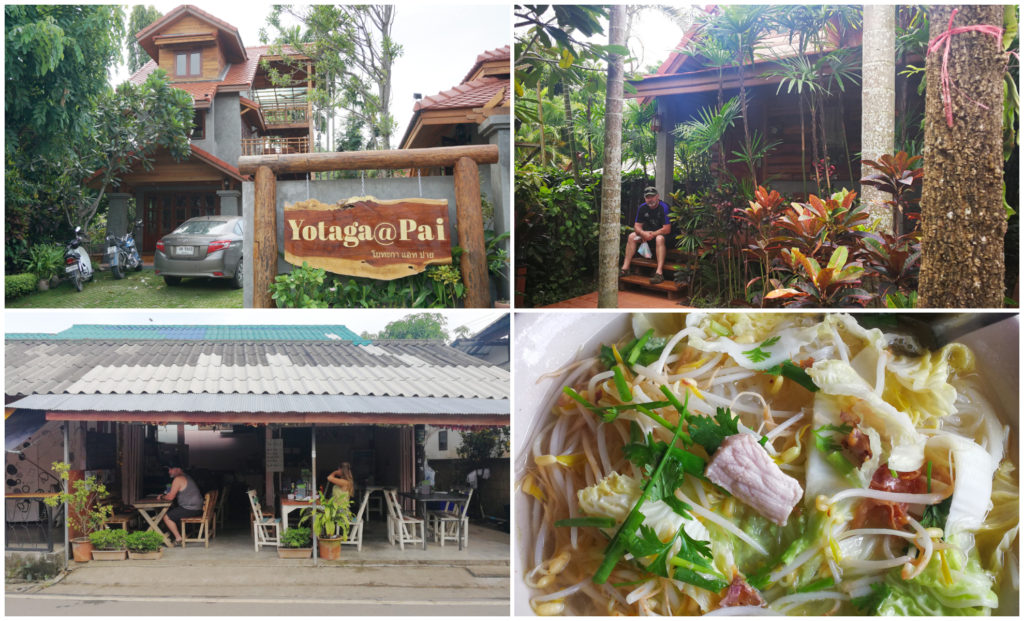
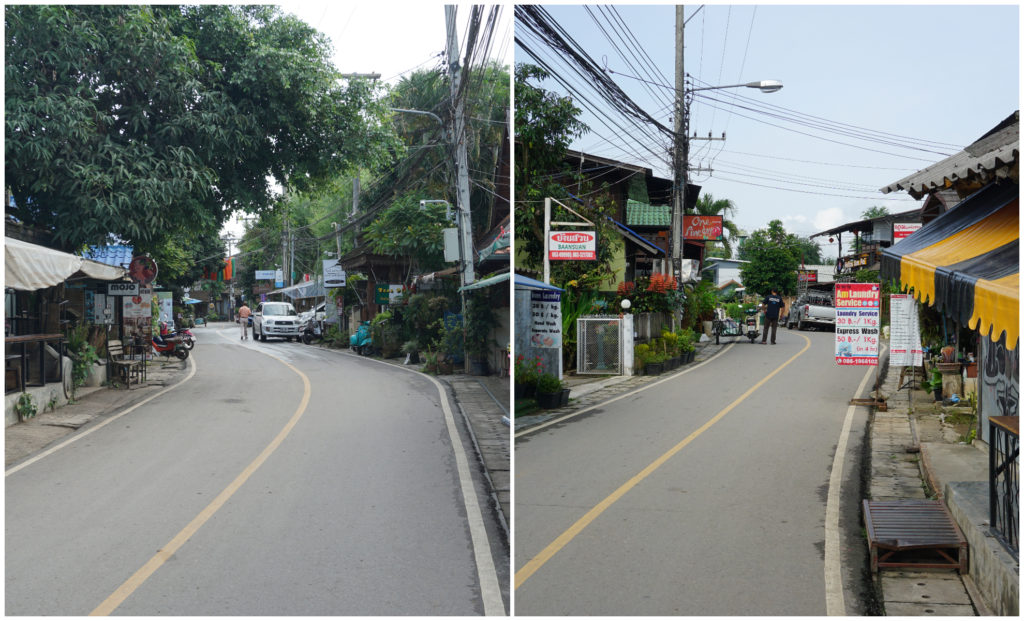
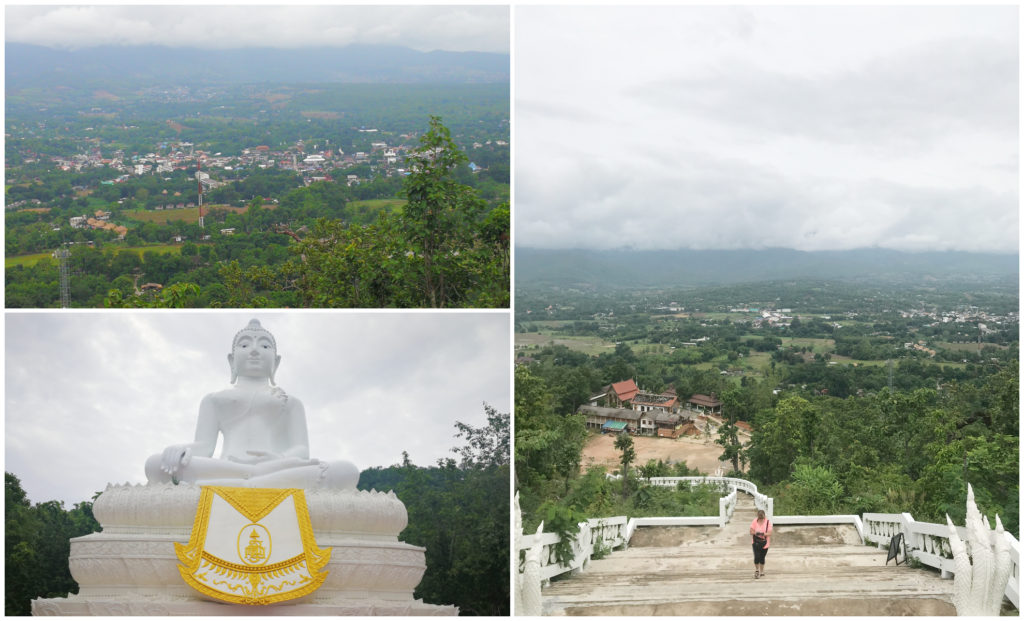
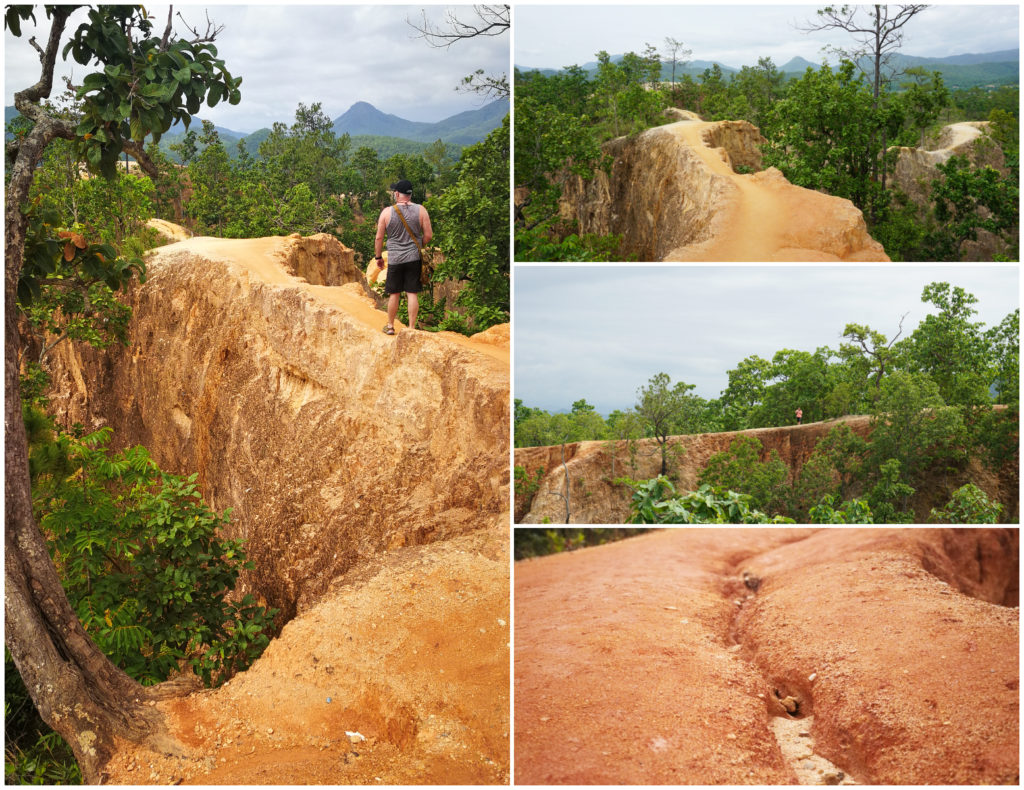
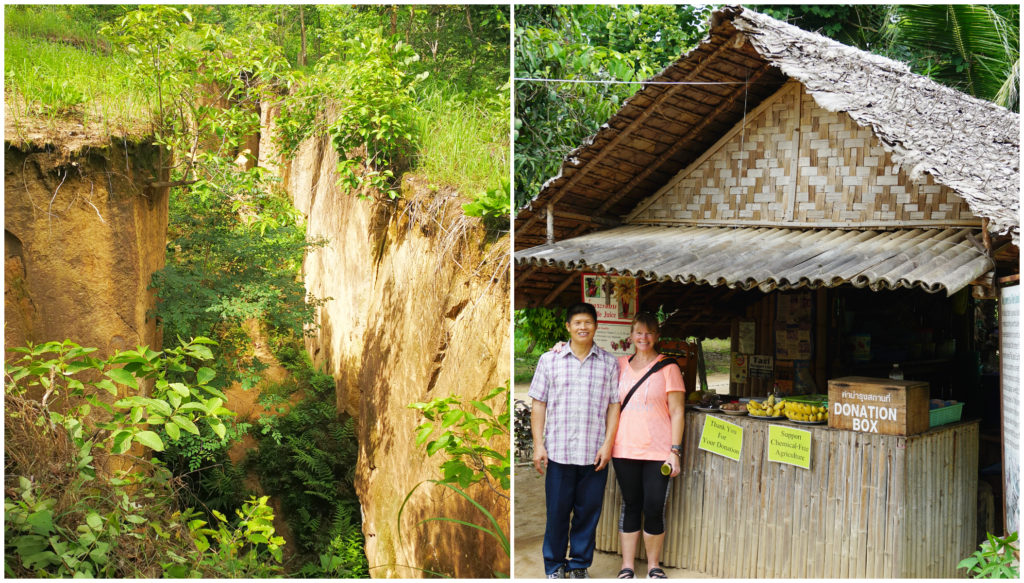
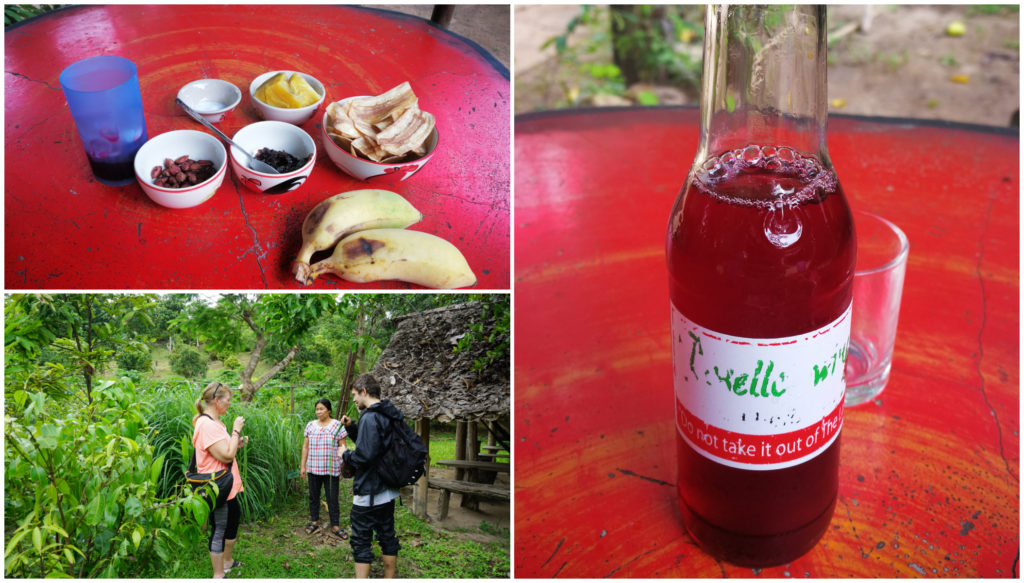
A really brilliant post Linda, I can appreciate the amount of work that you put in to this video and it has paid off. Although I think you’re brave to tackle the road in a hire car, I know how dodgy the bus drivers are so in fact I reckon you’re safest under your own steam.
You’ve made me realise how much I love and miss Thailand and SE Asia.
Thanks for your feedback Sue. I’m finally starting to catch up with the blogs and videos. Yup, the road was hair-raising for sure but would have been worse on a motorbike!!!